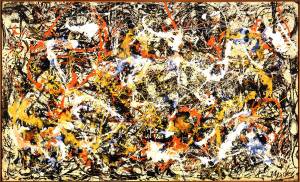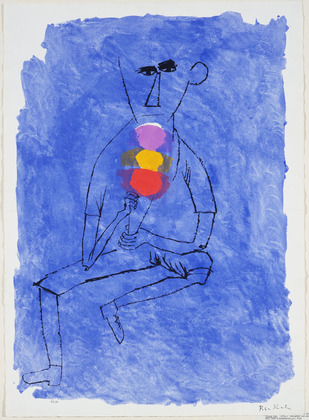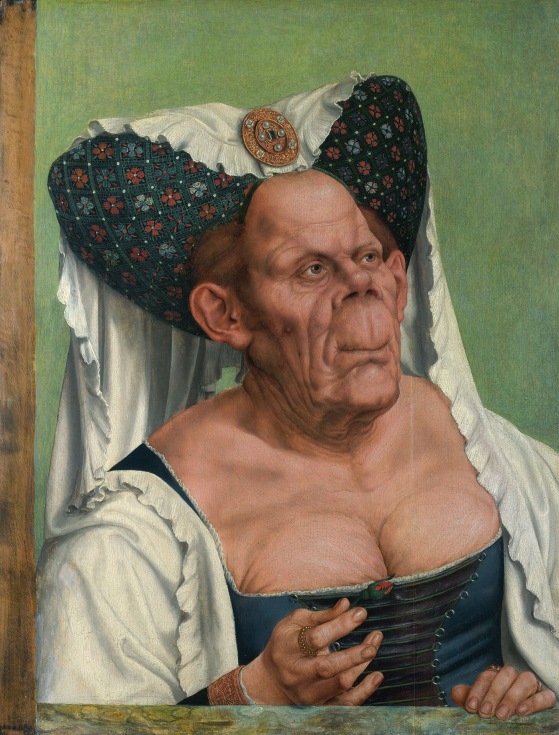PDP
Posted: April 30, 2015 Filed under: Constellation, Dissertation Prep, Level 5 Constellation Leave a commentI knew I wanted to explore about Metaphor for my dissertation because it is also my choice of visual language. I always find artworks that have ambiguity in meanings interesting, because they are thought provoking, I particularly look up to works by Paula Rego, Kiki Smith, Louis Burgois and Georgia O’keeffe. Their artworks are heavily influenced by symbols, folklore and identity. Even though I chose mannerism instead the metaphysics of metaphor as my constellation option, I found that mannerism have fundamental association with metaphor. They both use symbols and are heavily influenced by man’s perceptions towards the subjects/objects presented. Putting my right foot forward into term 2, I found that dissertation prep lectures to be quite helpful and easy to access. They informed me the general idea of what I need to prepare for this year and what I’ll be doing next year as well.
I am glad that I have the same option tutor as my dissertation tutor. Tutorials and seminars given from my tutor at the beginning of term 2 were very helpful for developing my ideas as well as narrowing down to the right subject and focus that I want to research or study. As suggested by my tutor, it is always helpful to have a dissertation theme that correlates with my subject module. Both modules will support each other and I can say that they have. I began reading books about symbols by Carl G. Jung (1875-1961) and visual metaphor book such as ‘Pictorial metaphor in advertisements and billboards’ book by Charles Forceville (1996). Theory of Symbols explained by Jung in his book ‘Man and His Symbols’ (1972) has opened up my view about the deeper unserdtandings in symbolism and perceptions as well as its power to influence our perspectives in our beliefs, religions, politic, social and psychology. Jung used dreams produced by his patients and analysed the symbols in it by finding symbols’ relationship with reality. Each symbols has different meaning and association to every man. Forceville’s book got me interested in the use of metaphor for communication, science/math and politic. He introduces a new concept of ‘Pictorial metaphor’ by analysing the amount of metaphors found in an image. From this moment I realised that I want to dig deep about the use of metaphor, especially in building identity and empowerment.
My tutor really helped me when I’m stuck with finding connection between symbols and metaphor. She suggested me to look and analyse from different angles or fields manifested with metaphors, such as folklore and primitive ceremony. I began to expand my understanding of metaphor by reading ‘Metaphor and Thought’ book by Adrew Ortony (1993). The contents of this book is vast because it’s a collection of papers by academics that studied different fields where metaphors are used – in communication, education, learning and science. Here I found the definitions and differences between the literal and metaphor. I continued my research to Journals about metaphor used in empowerment. I found that the library’s collection is huge and quite daunting, however the service that our library provides for hard copies and online journals are remarkable and need a little getting use to manoeuvre.
Right before the Easter break, I had a final tutorial with my diss tutor. I think panic and nervousness took over my head but she reassured me that I just need to keep calm and do it step by step. I can not fault the support she gave me. I made sure that I have all I need to write. As I am a slow reader, it took me weeks to read the books. I planned the paragraphs in bullet points and then expanded the ideas. The concepts and theories that I focused on are by Carl Jung, Max Black, Lakoff & Johnson as well as few case studies. The case studies I chose are the ones that used metaphors to empower women who had been subjected to abuse in South Africa, Mexico and Pakistan. I’m also considering to analyse my ongoing art base workshop project working with a local charity in Cardiff. However I am worry that I may not be objective in voicing my opinions.
I also like using mind map to explore ideas, questions and possibilities, so I included a diagram of my initial ideas and images as examples which I am going to use to explain about the use of metaphor in my dissertation. Metaphor’s best characteristic is it helps describe abstract concepts/values, especially in science. Metaphor is highly used in teaching math and science. Many scientist and physicists used metaphor in understanding matter that they are studying by sketching/drawing e.g: Darwin and J.M. Cajal.
The dissertation preparation & proposal forms provided for us are quite straight forward and structured. The questions and explanations assisted me like a step by step guide in planning my dissertation. If I were to change the subject of my dissertation next year, I think the proposal form would be used again.
Hiroshima Mon Amour
Posted: December 10, 2014 Filed under: Constellation, Level 5 Constellation, Mannerism | Tags: death, Film, Hiroshima, Hiroshima Mon Amour, love, Mannerism, suffering Leave a commentThe film was made in 1959 and directed by Alain Resnais. The film tells a story of a French actor who is filming an anti-war film in Hiroshima and has an affair with a married Japanese architect. The two main characters interchange their perspective in war and on love. The film was nominated for Oscar in 1959 for best writing, story and screenplay, won the BAFTA awards for Best director (1959), nominated for Palme d’Or for Alan Resnais, won New York Critique Circle Awards for Best foreign language film (1960) and among many others.
The film was considered to be ahead of its time. It used flashback technique which was innovative to the time. The story is also tell about love and suffering by presenting the remembrance of the horrific event through newsreel and documentary footage, the phase is slow yet calculated, repetition in words and ideas. This techniques is effective in engaging the audience with the story and creates emotion also memory of feeling of love and happiness.
Here’s the trailer. The film is worth watching.
“Ugly” and “Strange” in art and design
Posted: November 13, 2014 Filed under: Constellation, Level 5 Constellation, Mannerism | Tags: Quentin Massys, The Ugly Duchess, Ugly Leave a commentUGLY
There is no positive without the negative. There would be no beauty without ugliness. The definition of ugly to me lays on the assumptions of ugliness. For example portraits that are showing who they really are instead of what they look like (realistic face).
In Quentin Massys’ The Ugly Duchess he painted a satire of an old woman (in around 1513) who try to recreate her youth. She is wearing a beautiful old fashion dress and headdress. Her face is ‘unnatural’ shape. The wrinkle on her skin tells how old she is, which most probably more than a hundred years old. She is holding a red flower which indicates that she is looking for companion.
In this painting, Massys is depicting an woman who suffered from a malfunction of bone disease (Paget’s disease).
Therefore, I think he is showing us to look beyond the portrait.
The Ugly Duchess – http://en.m.wikipedia.org/wiki/The_Ugly_Duchess#/image/File:Quentin_Matsys_-_A_Grotesque_old_woman.jpg date: 13/11/2014
STRANGE
Strangeness is presenting subject matter through different points of view so that the viewers would see the world in a different way or strange and unfamiliar way in order to extend its perceptions.
In my illustration, these technique could help me express the unseen within the narrative, the invisible to our eye without being literal which therefore could give more understanding and have more meaning.
Reality in Art & Design
Posted: November 13, 2014 Filed under: Constellation, Level 5 Constellation, Mannerism Leave a commentOne of the most famous work of Jackson Pollock is Convergence, which was painted in 1952 (oil on canvas). He’s one of the leading figure in the American expressionist art movement. The painting embodied the American ideals of freedom of speech and expression.

Jackson Pollock – Convergence, 1952 http://uploads2.wikiart.org/images/jackson-pollock/convergence-1952.jpg – date 13/11/2014
In the same year, below screenprint and watercolour painting was created by Ben Shahn (Lithuanian American). Not many people knew about this painting at the time. It represents the lives of industrial workers, farmers and families. He used his work as a voice against injustice.

Ben Shahn – Tripple Dip, 1952 http://www.moma.org/collection//browse_results.php?object_id=68193 – date 13/11/2014
There was tension between the US and the Soviet Union. The western believe that the spread of communism anywhere threatened democracy and capitalism everywhere. Therefore, communism needed to be contained by diplomacy, by threats and even by force. Unbeknownst to the artists, American Expressionism movement was funded by the CIA (used as propaganda tool vs Soviet oppression). The CIA appreciated his style because it does not express social realism and communicate political gesture. Meanwhile there was a rising in civil rights movement spoke out against inequality and injustice (African Americans and feminist).
In my opinion, the art is still very much influenced by who have the power to control (i.e. money, politics or religion). What I think is best to do is to keep my perception open and always see things from different perspectives so that the art will not be bias.
Rietvield Schroder House
Posted: November 13, 2014 Filed under: Constellation, Level 5 Constellation, Mannerism Leave a commentThe house was designed by Gerrit Rietvield in 1924 for Truus Schroder. The house is influenced by Neo Plasticism (artists and architects). The design is a head of its time. Composition is portrayed in multiple layers and is simplified in vertical and horizontal lines, form, shape, colour and transparency. The Use of primary colour creates a negative and positive space. Open space with changeable partition walls that can be adjusted based on the need of the people who live in it. It creates a sense of the outside is inside. The material, architects and resistance of the matter influenced each other to create mutual involvement.
Introduction to Mannerism
Posted: November 7, 2014 Filed under: Constellation, Level 5 Constellation, Mannerism | Tags: constellation, Lecture, Mannerism Leave a commentMannerism art movement began in 15c. The term developed from italian word Maniera or style in painting, sculpture as well as architecture. Artists are beginning to defy the guideline from the power that be (i.e religion/church).

